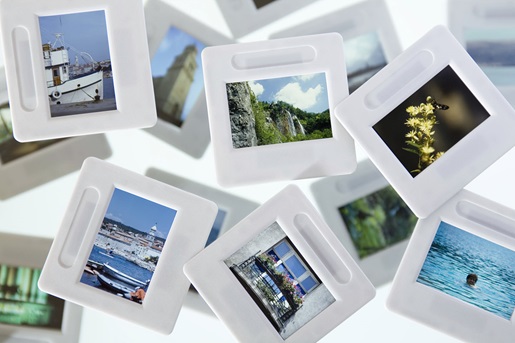Follow these easy instructions to get high-quality scans of family photos and important documents
In the past, digitizing your medical bills, tax documents, or other important paperwork was a hassle. A combination of system incompatibilities and driver woes often led frustrated people to Google, desperately searching phrases like “How do you scan a document” for help.
Thankfully, it’s now easier than ever to figure out how to scan a document. If you’ve ever asked yourself, “How do I scan a document and upload it to my computer?” the following six simple steps will guide you through the process. When you’re done, you’ll have perfectly digitized copies of your files ready to share on social media, store on a local hard drive, or use however you need.
Jump to a section:
How to scan a document
Step one: Ensure your scanner is turned on and connected
Press the power button on your scanner to turn it on. If you need to confirm your scanner is properly connected, check the following:
- On Windows 10: Select Start, click Settings, then navigate to Devices, then Printers & scanners. Or, type “Printers & Scanners” into the Windows 10 search bar and click the Printers & Scanners result.
- On Mac OS: Click the Apple menu, navigate to System Preferences, then click on Printers & Scanners.
If your scanner is connected to your computer, you should see its name within the list of devices on your respective operating system's menu. If your scanner doesn't appear, you may need to set up your device for use — consult your scanner's installation documentation for instructions.
Step two: Open your scanning software
If your scanner comes bundled with software, open it now to ensure the best compatibility and get the most out of your scanner's built-in features.
If you don't have any scanning software, that's ok! Both Windows 10 and Mac OS have built-in scanning tools. They may not be as robust as custom-tailored software, but they'll get the job done.
- On Windows 10: Click Start, navigate to Windows Accessories, then click Windows Fax and Scan. Alternatively, you can search for Windows Fax and Scan in the Windows 10 search bar and click on the matching result. Make sure you have Scan selected from the options in the bottom left corner of the window.
- On Mac OS: Options for scanning are located within the Printers & Scanners menu previously mentioned.
Did you know?ScanSnap scanners specialize in versatility and ease-of-use at an affordable price. Click here to learn more.
Step three: Place the pages you want to be scanned into the scanner
Before starting your scan, determine how many pages you have, what kind of scans you need, and what scanning options you have available.
- Flatbed scanner: Perfect for single, one-sided documents, images, or anything you need a high-quality scan of. To use, open the lid of the scanner, align your document with a corner of the glass tray (usually designated by an arrow) content-side down, and close the lid.
- Automated document feeder: Useful if you have more than one document or two-sided documents. To use, stack your documents so the sides are as flush as possible, then insert them into the feeder just enough so it will pull your documents when scanning begins. Consult your operating manual to determine the proper facing of documents when using a sheet feeder.
Both methods are perfectly capable of scanning most documents, so don't worry if your scanner only has one of these options. If your scanner is equipped with a flatbed and feeder, use the one that best suits your needs.
Step four: Scan document
Your scanner may have a simple scan button on the device that will perform one-touch scans when used in conjunction with the included software. If all you need is a digitized copy of your document using default settings, this will likely be more than enough to scan documents.
If your scanner doesn't have on-device buttons or you need to tweak scanner settings, open up your software of choice and click the New Scan button (or similar; the exact language and functionality to scan documents will differ depending on what you’re using).
You may see the following options when initiating a scan:
- Source: If your scanner has both a flatbed and feeder, pick the one you’ll use to scan documents.
- Color: Pick between black and white, color, or other coloring and detail options. Black and white images tend to scan quickly and are smaller in file size than color images, but choose the one that makes sense for your needs.
- File type: You can set the image's file extension here. PDF or JPEG files are the most common and provide a good balance between size and quality, while BMP files are much larger, and TIFF files are smaller (great for text documents).
- Resolution/DPI: DPI stands for “dots per inch,” and the number determines the quality of your scan. Higher numbers mean better quality but also larger file sizes. 300 dpi is often the default setting and is perfect for general use.
- Brightness/Contrast: Default options are fine for most cases, but you may need to adjust these depending on the quality of your source documents. For example, if your documents have faded text, you may need to increase the contrast for a more accurate scan.
Options may vary depending on software choice and operating system, but these are the most common settings to scan documents. Once everything is to your liking, click Scan to begin.
Did you know?PCMagazine described the ScanSnap iX1400 as “compact, friendly, and easy behind the scenes." Click here to read the full review and see how the iX1400 provides professional scanning speeds and quality at an entry-level price.
Step five: Check scan preview
After initiating the scan, you’ll likely get a preview of the final scanned image, which usually takes a fraction of the final scanning time. Here, you’ll be able to view what your finalized scan will look like, allowing you to make any final adjustments before initiating a full scan. If everything looks good, click the scan button. Your scanner will begin working and may take several minutes to complete depending on how detailed the final image is.
Step six: Save scanned document
The final step in the process of how to scan a document to a computer is to check that your software has saved the document once it has been scanned. If you’ve scanned more than one document, or your documents are double-sided, ensure all pages are scanned and saved correctly. Re-scan any documents that may be missing or have come out poorly.
By default, Windows Fax and Scan saves scanned images in the Scanned Documents sub-folder. This folder is accessible by navigating to your Documents folder or typing Scanned Documents into the Windows 10 search bar and clicking on the top result. You can also click the Save As button in the toolbar to change the file type or save the image in another location.
On Mac, saved scans default to the folder determined by your scanner during initial setup — refer to your scanner’s documentation to find the exact location.
Our recommendation: ScanSnap iX1400
We know you have no shortage of options when it comes to choosing a home document scanner. We pride ourselves on having spent the last 50+ years designing and developing some of the most beloved electronics in the world, including our line of award-winning, easy to use, one touch ScanSnap scanners.
The ScanSnap iX1400's built-in ultrasonic sensors and advanced paper-separation technology automatically detect document types and touch-up image quality, giving you fast, reliable, and hassle-free scans at the push of a button. The included ScanSnap Home software provides a simple, all-in-one editing solution for scanning, managing, editing, and sending important documents and images. Click here to learn more and shop the full line of ScanSnap scanners.













